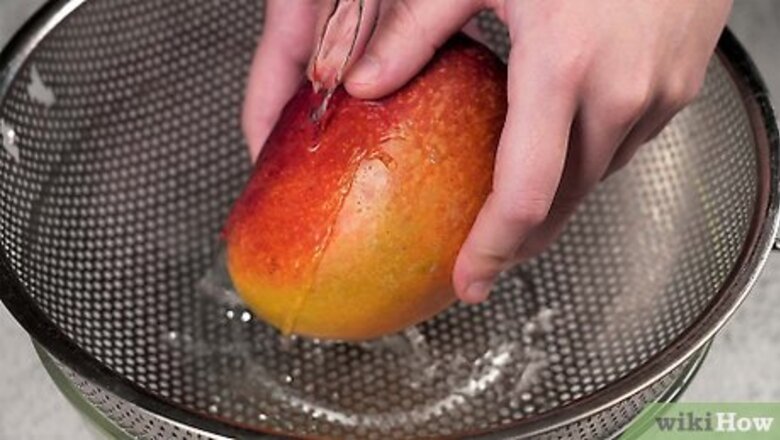
views
Cubing the Mango (the Hedgehog Method)
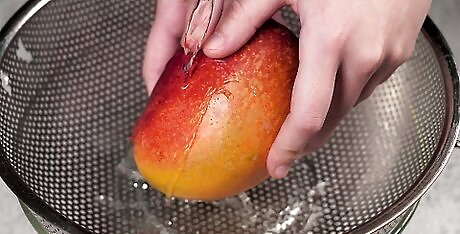
Wash the mango. Hold the mango under cool running tap water, and gently rub it with your hands as you rinse it. You may also use a clean vegetable brush to scrub the surface of the mango, but this isn’t necessary since you will not be eating the skin.
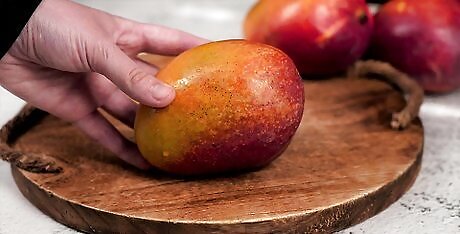
Place the mango on a sturdy cutting board. Using your non-dominant hand, stand the mango up on a cutting board. You will be cutting the mango downwards from the top of it. With your dominant hand, pick up a serrated edge knife.

Use the serrated edge knife to cut the mango into three pieces. Mangoes have a flat pit directly in the middle, which you will not be able to cut into. The fruit itself is the shape of an oval. When you cut the mango into thirds, make two parallel slices on either side of the pit in the middle, which is about ¾ of an inch thick. The fattest two edges of the mango are called the “cheeks.” When cutting the mango, you want a to preserve as much of the cheeks as possible, since this is the part you eat. You will end up with three pieces: two halves with lots of mango flesh on them, and the middle section that has the pit.
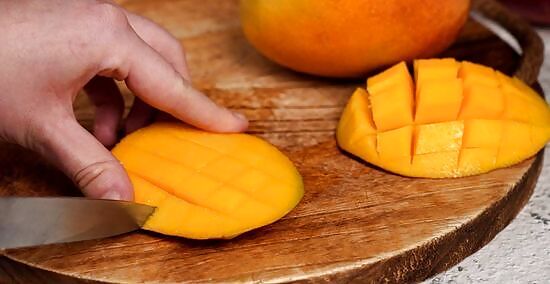
Score the mango cheek. Use the knife to make lengthwise and crosswise cuts in the two mango cheeks. Each cut should be about ½ inch apart, and the cuts should not go through the skin.
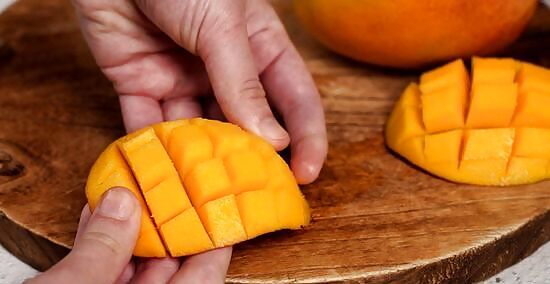
Press the back side of the mango cheek up so the flesh pokes out. The mango segments will stick out, almost like a hedgehog’s back, which is why this is sometimes called the “hedgehog method.” Now, you are ready to remove the majority of the mango flesh.
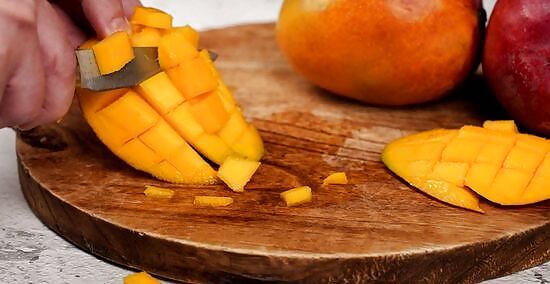
Trim the segments off with a small paring knife. Now, you can trim the segments of mango flesh off with a knife and serve it. Careful—the skin is very thin, and if you cut into the skin, you could cut your hand. Sometimes, if the mango is ripe enough, you can simply remove the segments with your hand. Other people like to eat the segments straight off the skin!

Cut around the pit with a small paring knife. Lay the slice with the pit flat on the cutting board, then trim around the pit with the paring knife. It can be difficult to tell where the pit is, but in general, it begins where the mango is too tough to cut through. It will also be oval-shaped.
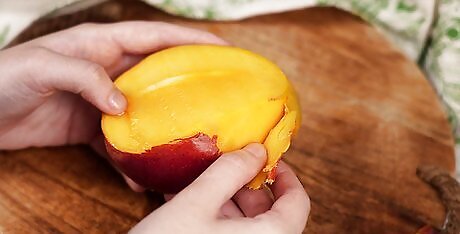
Peel the skin from the remaining flesh. Use your fingers to gently remove the skin from the slice of mango that has the pit. The skin is very thin and is easy to peel off.
Using the Corn-on-the-Cob Method
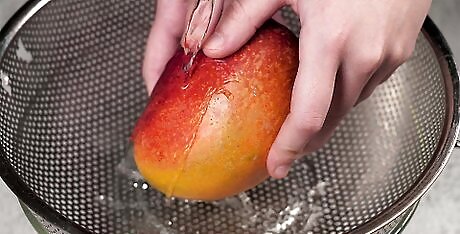
Wash the mango. Hold the mango under cool running tap water, and gently rub it with your hands as you rinse it. You may also use a clean vegetable brush to scrub the surface of the mango, but this isn’t necessary since you will not be eating the skin.

Peel the mango with a Y-shaped vegetable peeler. Grip the vegetable peeler with your dominant hand and stand the mango up with your non-dominant hand. Using long strokes, guide the edge of the peeler softly down the edge of the mango. You do not need to apply much pressure when peeling the skin. Continue to turn the mango as necessary as you peel every edge. Use caution; your hands may become very slippery.

Slice the top end and bottom off of the mango. The mango is an oblong shape, almost like a football. The two tips of the mango are the small edges that come to a rounded tip. Slice these tips off so the edges of the mango are flat.
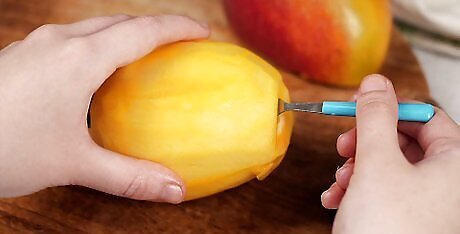
Insert a corn-on-the-cob holder in either end of the mango. The two sharp tips of the corn-on-the-cob holder will sink easily into the mango tip. As you cut off the flesh from the mango, grip the corn-on-the-cob holder. This will keep your hands dry and will make the process of removing the mango flesh less slippery.

Use a knife to cut the mango into three pieces. Mangoes have a flat pit directly in the middle, which you will not be able to cut into. The fruit itself is the shape of an oval. When you cut the mango into thirds, make two parallel slices on either side of the pit in the middle, which is about ¾ of an inch thick. The fattest two edges of the mango are called the “cheeks,” and these are the two edges you are cutting. When cutting the mango, you want a to preserve as much of the cheeks as possible, since this is the part you eat. You will end up with three pieces: two halves of mango flesh, and the middle section that has the pit.

Trim the flesh off the pit. Using the same knife, trim the rest of the mango flesh off of the mango, leaving only the pit behind. Use the same type of motion you used when peeling the mango: move the knife from top to bottom, scraping off the flesh of the mango. When your knife cannot scrape any more mango flesh off, this means you have reached the pit. Now, you are ready to enjoy your mango.




















Comments
0 comment